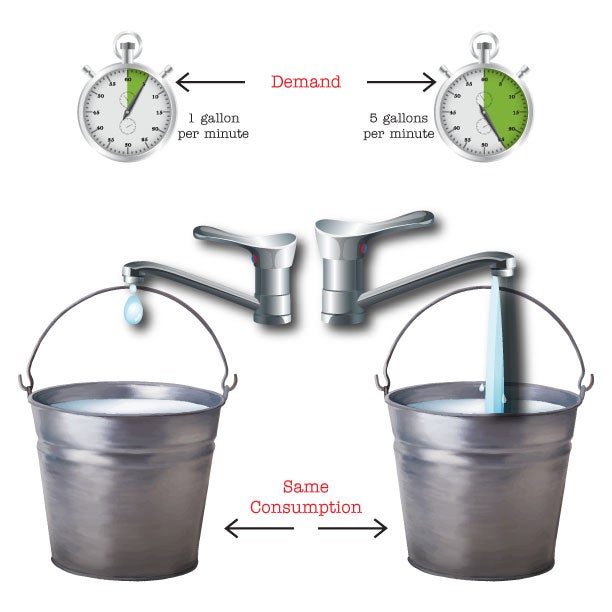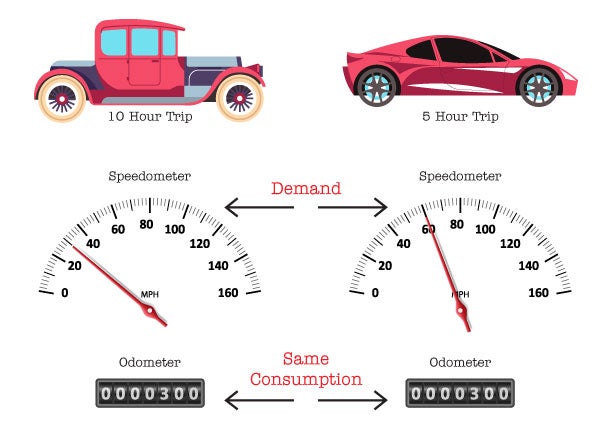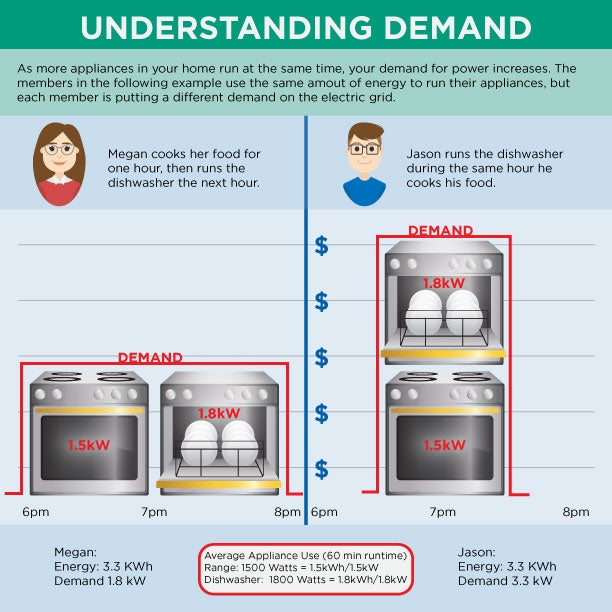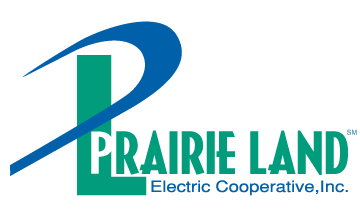What is Demand (kW)?
Demand is the rate at which a member uses electric energy. A kW is 1000 watts, and a kWh represents a 1 kW used over 1 hour. Two members can use the same amount of energy, but one might use it slowly (for example, 1 kW over the course of an hour) and the other much faster (for example, 1 kW in 15 minutes). The first member put 1 kW of demand on our system; the second, since they used the energy 4 times faster, put 4 kW of demand,.
Here are a couple of good everyday analogies that might help in understanding electric demand vs. energy:


What is the Demand Charge?
Demand charges are set to recover the costs associated with fixed capacity-related distribution equipment and/or wholesale purchased power. These costs are not associated with the number of customers using energy over time. Rather, they are a function of sizing the equipment to meet a member's peak demand, or maximum usage at a specific point in time. Costs to build and maintain a distribution substation would be an example of capacity-related fixed costs, as well as the remaining fixed costs to purchase, operate and maintain lines and transformers not already recovered in the monthly flat Service Access Charge.*
Tip: Members with demand charges should stagger their usage.
Note: Although a demand measurement in kW is available for all members, currently, demand charges are applicable only to commercial services that receive a charge based on that measurement. Members without demand charges pay for these capacity-related costs in their energy charges.

